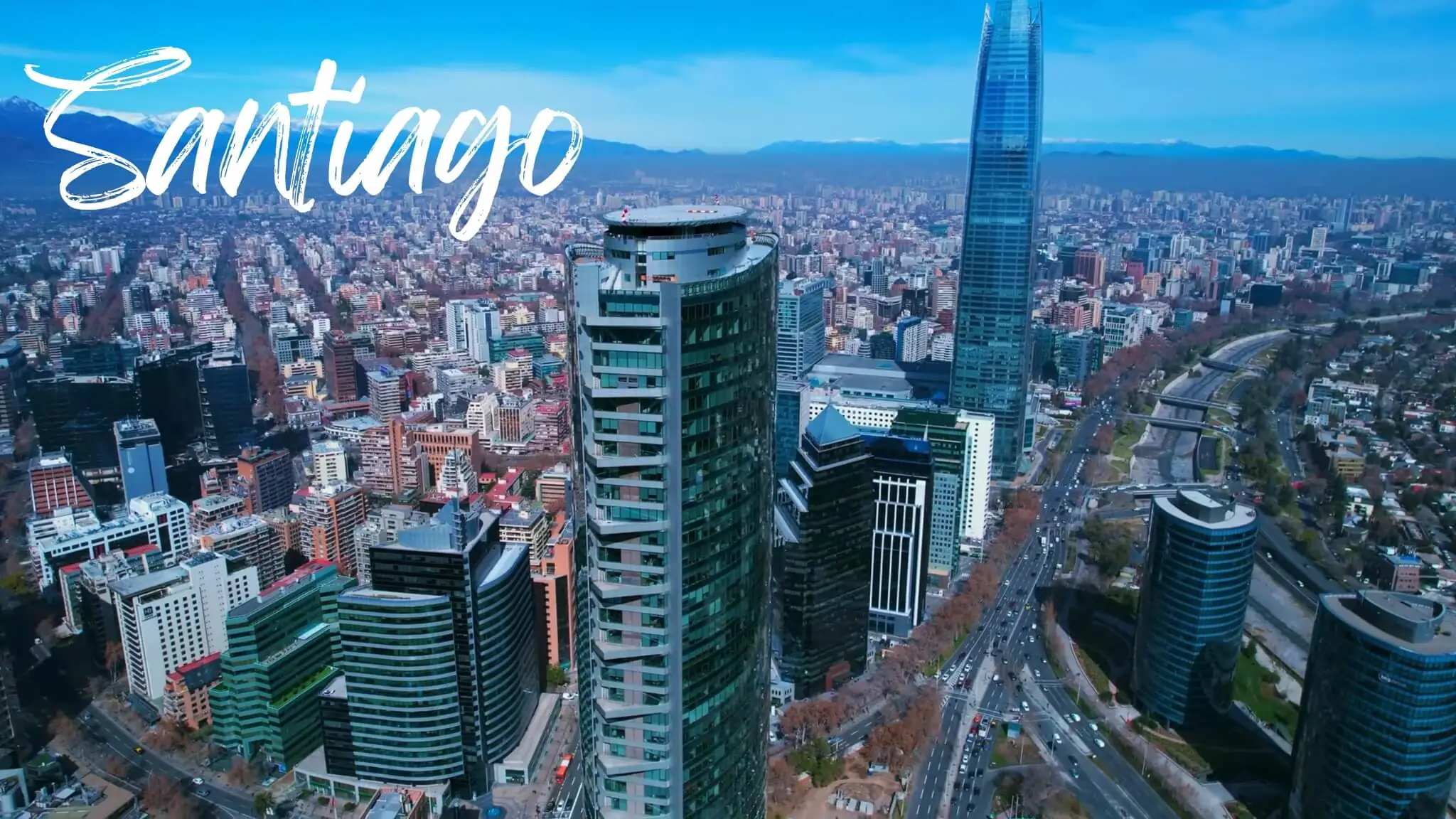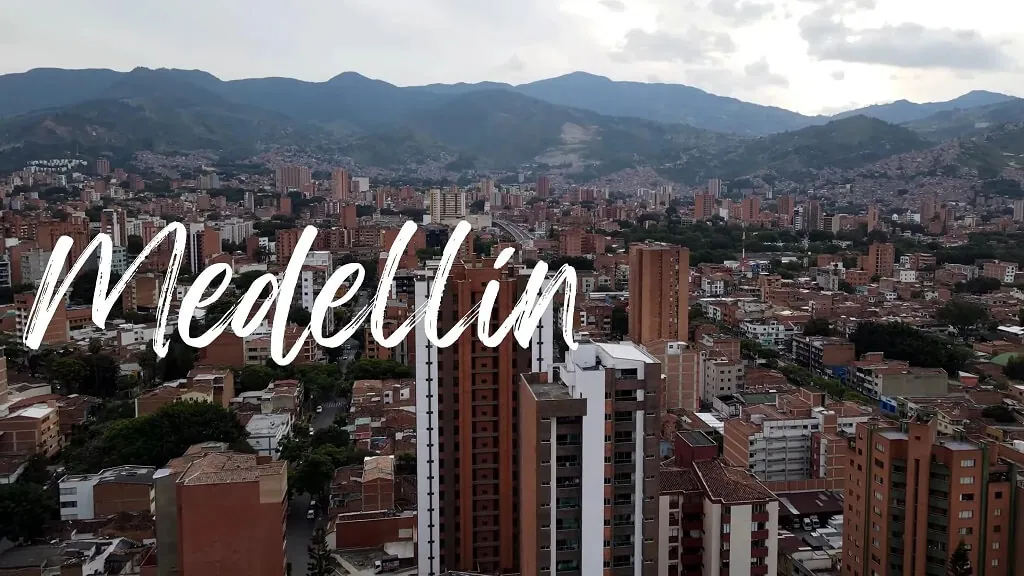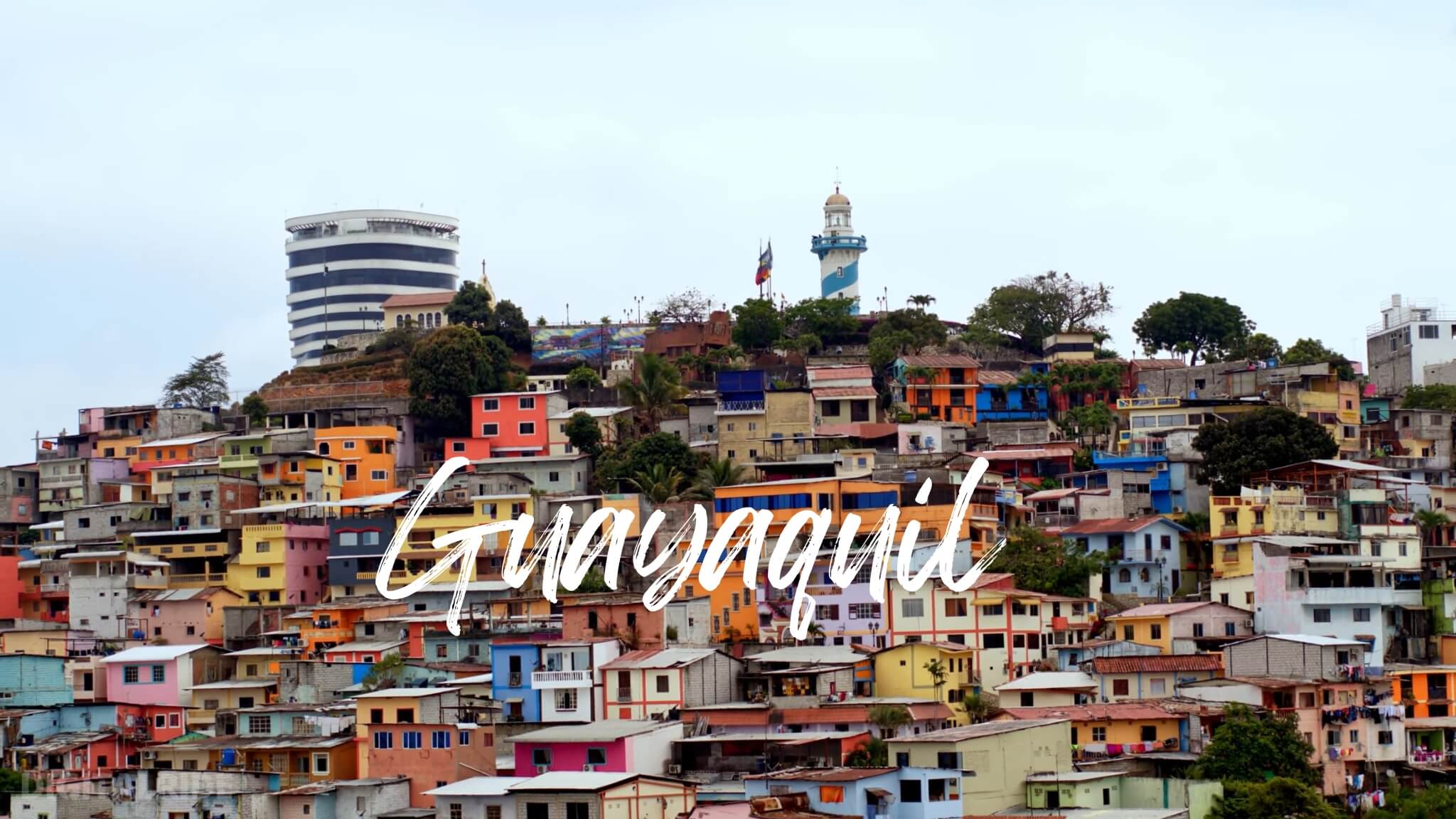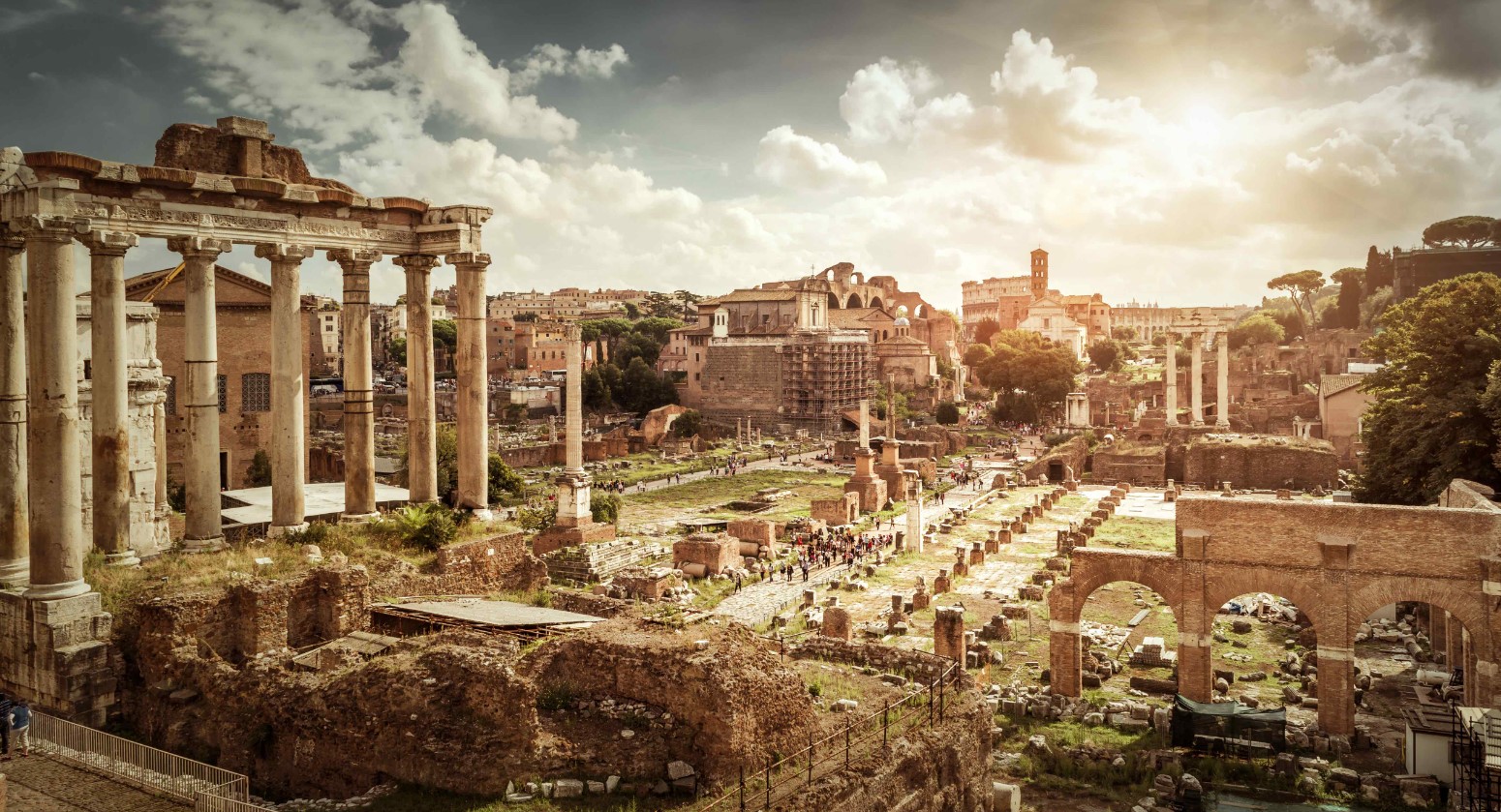
The most populous cities in South America are booming and are key drivers of the region’s economy, culture, and development. Millions live and work in these cities, where growth shows no signs of stopping.
This year, cities like São Paulo, Buenos Aires, and Bogotá are leading the charge. Let’s dig into why these cities are so important and what makes them the heartbeat of South America.
- São Paulo, Brazil – 21.7 million
- Buenos Aires, Argentina – 15 million
- Rio de Janeiro, Brazil – 13.4 million
- Bogotá, Colombia – 10.6 million
- Lima, Peru – 10.4 million
- Santiago, Chile – 6.7 million
- Belo Horizonte, Brazil – 6 million
- Brasilia, Brazil – 4.5 million
- Fortaleza, Brazil – 4 million
- Recife, Brazil – 4 million
- Medellín, Colombia – 4 million
- Guayaquil, Ecuador – 3.5 million
- Quito, Ecuador – 2.7 million
- Caracas, Venezuela – 2.7 million
- Maracaibo, Venezuela – 2.5 million
- Montevideo, Uruguay – 1.8 million
- Salvador, Brazil – 2.9 million
- Córdoba, Argentina – 1.6 million
- Asunción, Paraguay – 1.5 million
- Rosario, Argentina – 1.4 million
1. São Paulo
| Population | 22.8 million |
|---|---|
| Area | 1,493 km² (city); 7,951 km² (metro) |
| Density | 7,216 people per km² (city area) |
| Economy | 24.6% of Brazil’s GDP |
| Major Industries | Finance, services, manufacturing |
| Crime Rate | 45.51 (Crime Index) |
| Tourism | 14.9 million tourists per year |
São Paulo, the largest city in Brazil and South America, plays a central role in the continent’s economy.
It accounts for nearly a quarter of Brazil’s GDP and is home to major industries like finance, manufacturing, and services.
The population of Sao Paulo continues to grow, reaching over 22.8 million in 2025, with its metropolitan area expanding rapidly.
While this city is a global financial hub, it also deals with significant challenges, especially regarding crime.
Though the city has made strides in reducing its crime rates, theft and violent crime remain prevalent in certain areas.
With a crime index of 45.51, it’s critical to note that some regions, like the Republica district, face higher risks, while wealthier areas are generally safer.
Despite these issues, São Paulo draws nearly 15 million tourists each year, who come for its vibrant culture, nightlife, and gastronomy.
It’s also a student hub, with close to a million students in its universities and colleges.
São Paulo is implementing the Smart Sampa project, which includes the deployment of 20,000 facial recognition cameras.
2. Buenos Aires
| Population | 15.6 million |
|---|---|
| Area | 203 km² (city) |
| Density | 7,700 people per km² |
| Economy | Major sectors: finance, services, tourism |
| Crime Rate | 33% decrease in the overall crime rate since 2020 |
| Tourism | Popular for tango, cultural sites, and gastronomy |
Buenos Aires is the second-largest city in South America, with a population of over 15.6 million in 2025.
Known for its rich cultural history, vibrant neighborhoods, and as the birthplace of tango, the city attracts tourists from around the world.
The metropolitan area is densely populated, with about 7,700 people per square kilometer.
While Buenos Aires has been making strides in reducing crime, like many large cities, it faces challenges.
Since 2020, the overall crime rate has dropped by 33%, with significant reductions in robberies, assaults, and homicides.
However, some areas still experience higher risks, particularly for theft and pickpocketing, especially in tourist-heavy spots.
Yet, the city’s commitment to public safety has helped reduce incidents in residential areas and on public transport.
The city also plays a central role in the economy of Argentina, with significant contributions from its financial sector and a thriving tourism industry that keeps growing.
For visitors, Buenos Aires offers a mix of history, modernity, and unique experiences, from its world-famous cuisine to bustling markets and cultural festivals.
Buenos Aires is making a name for itself as a digital nomad hotspot. The city has launched several initiatives to attract remote workers, offering long-stay visas and promoting its affordable cost of living compared to other major cities.
3. Rio de Janeiro
| Population | 13.8 million |
|---|---|
| Area | 1,200 km² (city) |
| Density | 11,500 people per km² |
| Economy | Key sectors: oil, tourism, finance |
| Crime Rate | High, especially in favelas (over 40 per 100,000 homicides) |
| Tourism | Over 2 million visitors annually to Carnival and beaches |
Rio de Janeiro is Brazil’s second-largest city, with a population of 13.8 million in 2025. Famous for its beautiful beaches and world-renowned Carnival, the city also plays a major economic role, driven by key industries like oil, tourism, and finance.
However, like other large Brazilian cities, Rio faces significant challenges with crime, particularly in areas like favelas, where violence and drug-related crimes are frequent.
The homicide rate in Rio remains one of the highest in Brazil, with more than 40 murders per 100,000 residents.
Despite efforts to reduce crime, many neighborhoods, especially in the northern suburbs and favelas, continue to struggle with safety issues, making it a city of stark contrasts.
Organized crime and police militias add to the complex security landscape, and ongoing clashes between criminal groups and law enforcement are common.
Yet, Rio continues to attract millions of tourists each year, who come for its cultural attractions, including the iconic Christ the Redeemer statue, Sugarloaf Mountain, and the famous beaches of Copacabana and Ipanema.
The city is expected to create about 380,000 new jobs by the end of 2025, largely driven by growth in the service and tourism sectors.
Also – Check out the richest nations in South America.
4. Bogotá
| Population | 11.6 million |
|---|---|
| Area | 1,775 km² (city) |
| Density | 6,550 people per km² |
| Economy | Major sectors: finance, trade, manufacturing |
| Crime Rate | 13.6% victimization rate; rising armed robberies |
| Tourism | Known for cultural sites and growing digital economy |
Bogotá, Colombia’s capital and largest city, continues to grow, reaching a population of 11.6 million in 2025. The city serves as Colombia’s primary economic hub, with key sectors including finance, trade, and manufacturing.
Additionally, the city has seen significant growth in its digital economy, with numerous startups emerging in recent years.
However, like other major Latin American cities, Bogotá faces rising crime.
Armed robberies and violent crime remain a challenge, with many residents expressing concerns about security. In response, local authorities have implemented a “shock mode” to curb rising crime rates, increasing police presence across key areas of the city.
Despite efforts to reduce violence, security remains an issue for both residents and visitors, especially in certain districts.
5. Lima
| Population | 11.3 million |
|---|---|
| Area | 2,672 km² (city) |
| Density | 4,200 people per km² |
| Economy | Major sectors: manufacturing, trade, services |
| Crime Rate | Homicide rate: 7.2 per 100,000; robbery rate: 94.3 per 100,000 |
| Tourism | Known for historic landmarks and world-class cuisine |
Lima, the capital of Peru, remains a crucial city in South America in 2025. With a population of 11.3 million, it continues to be the economic backbone of Peru.
Lima’s economy is driven by manufacturing, trade, and services, while the city remains a popular tourist destination due to its rich cultural history and renowned gastronomy.
Crime in Lima, however, is a growing concern. The city has a homicide rate of 7.2 per 100,000 people, and robberies are reported at a rate of 94.3 per 100,000.
Extortion and violent crimes, including contract killings, are also on the rise, contributing to a general sense of insecurity.
Despite increased government spending on law enforcement and patrols, many neighborhoods continue to face significant safety issues.
Lima’s gastronomy sector is thriving, with the city being recognized as a global culinary destination. The Mistura Festival continues to draw thousands of food enthusiasts.
6. Santiago
| Population | 6.95 million |
|---|---|
| Area | 837 km² (city) |
| Density | 8,300 people per km² |
| Economy | Major sectors: finance, retail, manufacturing |
| Crime Rate | Crime index: 63.43; homicide rate: 10.1 per 100,000 |
| Tourism | Known for historical landmarks, Andes proximity, and wineries |
Santiago, the capital of Chile, is a bustling metropolis with a population of nearly 7 million in 2025. It plays a crucial role in the country’s economy, contributing significantly through sectors like finance, retail, and manufacturing.
Santiago’s urban development continues to grow, with its economy driving forward as one of Latin America’s most stable.
However, crime remains a concern in the city. Santiago has a crime index of 63.43, with a homicide rate of 10.1 per 100,000 people, reflecting ongoing challenges in controlling theft, assault, and drug-related crimes.
Despite this, the city maintains its appeal, drawing tourists with its historical landmarks, proximity to the Andes, and world-class wineries. It is important for both residents and visitors to stay cautious, especially at night, due to higher risks in certain areas.
Santiago’s international airport expansion project is completed last year, increasing the airport’s capacity by 50% to handle growing passenger numbers.
7. Belo Horizonte
| Population | 6.3 million |
|---|---|
| Area | 330 km² (city) |
| Density | 19,090 people per km² |
| Economy | Major sectors: mining, steel, manufacturing |
| Crime Rate | Crime index: 60.39; homicide rate: 30 per 100,000 |
| Tourism | Known for cultural sites, museums, and historic architecture |
Belo Horizonte is the third-largest metropolitan area in Brazil, with a population of 6.3 million in 2025. The city’s economy is largely driven by the mining and steel industries, and it serves as a hub for manufacturing and services in the region.
It’s also recognized for its rich cultural offerings, with numerous museums, parks, and historic architecture drawing tourists.
Despite its economic strengths, Belo Horizonte faces significant crime challenges. The city’s crime index is 60.39, and the homicide rate stands at 30 per 100,000 people. Issues like theft, vandalism, and violent crimes such as assault and armed robbery remain prevalent.
The city’s residents are particularly concerned about the increasing rate of muggings and property crimes, and safety at night is a serious issue.
Belo Horizonte’s cultural sector saw a boost with the opening of the Museu das Minas e do Metal, now attracting 25% more visitors than previous years.
8. Brasília
| Population | 4.93 million |
|---|---|
| Area | 5,802 km² (city) |
| Density | 850 people per km² |
| Economy | Major sectors: government, services, technology |
| Crime Rate | Homicide rate: 15.8 per 100,000; crime index: 55.72 |
| Tourism | Known for modern architecture and government buildings |
Brasília, the capital of Brazil, is home to nearly 5 million people as of 2025. It stands out as the country’s administrative hub, with its economy centered on government activities, services, and technology.
Designed in the 1960s, the city features modern architecture and remains a focal point for both tourism and business.
However, crime is a persistent issue in Brasília. The homicide rate is 15.8 per 100,000 people, and the overall crime index is moderate at 55.72.
However, there are concerns about inflation due to fiscal imbalances, which might impact overall stability.
Brasilia is also one of the safest cities in Brazil.
9. Fortaleza
| Population | 4.25 million |
|---|---|
| Area | 314.9 km² (city) |
| Density | 13,494 people per km² |
| Economy | Major sectors: tourism, trade, services |
| Crime Rate | Crime index: 75.67; homicide rate: 61 per 100,000 |
| Tourism | Famous for beaches, cultural festivals, and historic sites |
Fortaleza, located in the northeastern region of Brazil, is the fifth-largest city in the country with a population of 4.25 million in 2025.
It plays a key role in Brazil’s tourism and services sectors, drawing visitors for its stunning beaches, cultural festivals, and historic landmarks. The city’s strategic location makes it a hub for commerce and trade, further boosting its economy.
However, Fortaleza faces serious crime challenges. With a crime index of 75.67 and a homicide rate of 61 per 100,000 residents, it is considered one of Brazil’s most dangerous cities.
Armed robberies, muggings, and property crimes are common, and safety remains a concern, particularly at night.
Fortaleza is the largest economy in Northeast Brazil, with a GDP of R$67 billion, driven by services and tourism.
10. Recife
| Population | 4.3 million |
|---|---|
| Area | 218 km² (city); 2,768 km² (metro) |
| Density | 6,803 people per km² |
| Economy | Major sectors: tourism, manufacturing, services |
| Crime Rate | Crime index: 70.25; homicide rate: 42 per 100,000 |
| Tourism | Famous for historic sites, beaches, and festivals |
Recife, the capital of Pernambuco, is one of the most important cities in northeastern Brazil, with a population of 4.3 million in 2025. It is a key hub for both tourism and industry, attracting visitors to its beautiful beaches and historic sites.
The city also has a strong economic presence, with significant industries in manufacturing, trade, and services, as well as being a major port city.
However, like many large cities in Brazil, Recife faces challenges with crime. The city’s crime index is 70.25, and the homicide rate is 42 per 100,000 people.
Violent crime, including armed robbery and gang violence, is an ongoing concern, particularly in certain areas of the city.
11. Medellín
| Population | 4.1 million |
|---|---|
| Area | 380 km² (city) |
| Density | 10,840 people per km² |
| Economy | Major sectors: manufacturing, services, tourism |
| Crime Rate | Homicide rate: 14 per 100,000; crime index: 53.6 |
| Tourism | Popular for innovation, culture, and scenic landscapes |
Medellín, once infamous for its high crime rates during the era of drug cartels, has seen significant improvement in recent years.
As of 2025, its population stands at 4.1 million. The city has transformed into a major hub for innovation, manufacturing, and services.
Medellín’s economy has expanded, making it a key player in Colombia’s industrial and tourism sectors, with many visitors drawn to its cultural attractions and modern infrastructure.
Although the city has made progress, crime remains a challenge. Medellín’s homicide rate has dropped significantly, reaching 14 per 100,000 people, thanks to various security measures.
However, gang violence, extortion, and armed robbery are still prevalent in certain areas. Organized crime groups, like La Oficina, control parts of the city, and extortion, especially of local businesses, remains an issue.
12. Guayaquil
| Population | 3.2 million |
|---|---|
| Area | 344.5 km² (city) |
| Density | 9,250 people per km² |
| Economy | Major sectors: trade, manufacturing, logistics |
| Crime Rate | Crime index: 74.77; homicide rate: 42 per 100,000 |
| Tourism | Known for port activities and historical landmarks |
Guayaquil, Ecuador’s largest city and a key economic hub, has a population of 3.2 million in 2025. It plays a central role in Ecuador’s trade and logistics, thanks to its strategic location as a major port city.
The city’s economy relies heavily on manufacturing, commerce, and its port activities, making it a vital player in the nation’s trade infrastructure.
However, Guayaquil has faced significant challenges with crime, particularly over the last few years. The crime index stands at 74.77, and the homicide rate is 42 per 100,000 people.
Gang violence, extortion, and armed robberies have become increasingly common, largely driven by the rise of organized crime groups linked to the drug trade.
The situation has worsened to the point where a state of emergency was declared during last year, following violent attacks and terror incidents involving gangs.
13. Quito
| Population | 1.98 million |
|---|---|
| Area | 372.4 km² (city) |
| Density | 5,320 people per km² |
| Economy | Major sectors: tourism, commerce, services |
| Crime Rate | Crime index: 52; homicide rate: 25.9 per 100,000 |
| Tourism | Famous for colonial architecture and Andean landscapes |
Quito, the capital of Ecuador, has a population of just under 2 million in 2025. It is a cultural and economic hub, attracting both tourists and businesses.
Known for its well-preserved colonial architecture and proximity to the Andes, Quito has a growing economy, driven largely by tourism, commerce, and the service sector.
However, like other major Latin American cities, Quito faces rising crime rates. The city has a crime index of 52, with a homicide rate of 25.9 per 100,000 people.
Certain districts, such as Eloy Alfaro and Eugenio Espejo, report higher crime rates, particularly for car theft and violent robberies.
14. Caracas
| Population | 2.99 million |
|---|---|
| Area | 433 km² (city) |
| Density | 6,900 people per km² |
| Economy | Major sectors: services, oil, trade |
| Crime Rate | Homicide rate: 53 per 100,000; crime index: 84.2 |
| Tourism | Known for historical landmarks and mountain views |
Caracas, the capital of Venezuela, remains a significant city in South America, with a population of nearly 3 million in 2025.
Despite its ongoing economic struggles, largely influenced by Venezuela’s political instability, Caracas remains an essential hub for trade and services.
The city’s economy is closely tied to the oil sector, but it has seen massive shifts due to the country’s economic crisis.
Caracas is notorious for its high crime rate, with a homicide rate of 53 per 100,000 people and an overall crime index of 84.2. Violence, armed robberies, and kidnappings are common in many parts of the city, making it one of the most dangerous capitals in the world.
Despite these issues, the city still holds cultural significance with its historical sites and stunning views of the surrounding mountains, attracting both local and international tourists.
15. Maracaibo
| Population | 2.4 million |
|---|---|
| Area | 557 km² (city) |
| Density | 4,300 people per km² |
| Economy | Major sectors: oil, agriculture, trade |
| Crime Rate | Homicide rate: 47 per 100,000; crime index: 78.4 |
| Tourism | Known for Lake Maracaibo, cultural festivals |
Maracaibo, the second-largest city in Venezuela, has a population of 2.4 million in 2025. Situated near Lake Maracaibo, the city is a key hub for the oil industry, which dominates its economy.
Agriculture and trade also play significant roles in sustaining the city’s economic activity.
However, Maracaibo faces high crime rates, with a homicide rate of 47 per 100,000 and an overall crime index of 78.4.
The city struggles with issues related to violence, theft, and organized crime, which have escalated in recent years due to the country’s political and economic instability.
16. Montevideo
| Population | 1.78 million |
|---|---|
| Area | 201 km² (city) |
| Density | 8,852 people per km² |
| Economy | Major sectors: services, trade, IT |
| Crime Rate | Crime index: 56.03; homicide rate: 7.2 per 100,000 |
| Tourism | Known for beaches, colonial architecture, and cultural festivals |
Montevideo, Uruguay’s capital, is home to 1.78 million people in 2025. As the economic hub of the country, the city’s economy is driven by services, trade, and a growing IT sector.
It also represents 65% of Uruguay’s GDP, being the center for most industries and services in the country.
Although considered one of the safest capitals in South America, Montevideo still faces crime challenges. The city’s crime index is 56.03, with a homicide rate of 7.2 per 100,000 residents.
Common issues include property crimes, vandalism, and drug-related activities. Despite these challenges, it is generally safe during the day, although caution is advised at night.
17. Salvador
| Population | 3.99 million |
|---|---|
| Area | 693 km² (city) |
| Density | 5,764 people per km² |
| Economy | Major sectors: tourism, services, trade |
| Crime Rate | Homicide rate: 66.4 per 100,000; crime index: 75.9 |
| Tourism | Famous for Afro-Brazilian culture, historic architecture, and Carnival |
Salvador, the capital of Bahia, Brazil, is a city with a rich cultural heritage and a growing population of nearly 4 million in 2025.
It is known for its unique Afro-Brazilian traditions, stunning historic architecture, and the world-famous Carnival celebration. The economy relies heavily on tourism, trade, and services, making it an important city in the northeast of Brazil.
However, Salvador faces severe crime challenges. With a homicide rate of 66.4 per 100,000 residents, it is one of the most dangerous cities in Brazil.
Violent crime, including armed robbery and drug-related violence, is common in certain areas.
18. Córdoba
| Population | 1.63 million |
|---|---|
| Area | 576 km² (city) |
| Density | 2,830 people per km² |
| Economy | Major sectors: automotive, agriculture, services |
| Crime Rate | Crime index: 61.77; homicide rate: 5.2 per 100,000 |
| Tourism | Known for colonial architecture and cultural festivals |
Córdoba, located in central Argentina, is the second-largest city in the country with a population of 1.63 million in 2025.
The city plays a crucial role in the national economy, with key sectors including automotive manufacturing, agriculture, and a growing services industry.
Córdoba is also a hub for education and technology, thanks to its universities and research centers.
However, crime remains a challenge for residents and visitors alike. Córdoba has a crime index of 61.77, with concerns over violent crimes such as armed robbery and property crime.
The homicide rate stands at 5.2 per 100,000 people, which is relatively moderate compared to other cities in South America. Public safety measures are in place, but caution is advised, especially at night in certain areas.
19. Asunción
| Population | 3.57 million |
|---|---|
| Area | 117 km² (city) |
| Density | 30,513 people per km² |
| Economy | Major sectors: services, trade, government |
| Crime Rate | Crime index: 57.12; homicide rate: 7.8 per 100,000 |
| Tourism | Known for colonial landmarks and riverside parks |
Asunción, the capital of Paraguay, has a population of 3.57 million in 2025. It is the country’s most important city, both economically and politically, with its economy primarily driven by services, trade, and government activities.
The city also plays a central role in Paraguay’s administrative and financial sectors.
However, Asunción faces high levels of crime, with a crime index of 57.12 and a homicide rate of 7.8 per 100,000.
Residents report concerns about theft, violent crime, and corruption, with a notable rise in crime over the past five years. Public safety remains a key challenge, especially at night when the risk of robbery and assault increases.
20. Rosario
| Population | 1.61 million |
|---|---|
| Area | 178 km² (city) |
| Density | 9,045 people per km² |
| Economy | Major sectors: trade, agriculture, manufacturing |
| Crime Rate | Crime index: 89.16; homicide rate: 23 per 100,000 |
| Tourism | Known for its riverfront, cultural festivals, and soccer history |
Rosario, Argentina’s third-largest city, has a population of 1.61 million in 2025. It is an important hub for trade, agriculture, and manufacturing, playing a key role in Argentina’s economy due to its strategic location along the Paraná River.
The city is also famous for its cultural festivals and as the birthplace of soccer legends like Lionel Messi.
However, Rosario has become one of the most violent cities in Argentina, with a crime index of 89.16. The homicide rate stands at 23 per 100,000 people, with much of the violence driven by drug-related criminal activity and disputes between local gangs.
The city has seen a surge in organized crime, making it a focal point of the government’s security efforts.
FAQs
How many tourists visit Buenos Aires annually?
Buenos Aires receives around 3 million international tourists annually, with the majority visiting for business, culture, and leisure.
What makes Rio de Janeiro a top destination for events?
Rio is home to globally famous events such as Carnival and Rock in Rio, attracting millions of tourists each year and generating significant revenue.
What cultural events draw tourists to Recife?
Recife is famous for its Carnival and São João festivals, which are major draws for both domestic and international tourists.
Last Words
South America’s biggest cities are making major moves in 2025. São Paulo keeps leading the pack in finance, while Buenos Aires remains a cultural hotspot.
Rio de Janeiro is cashing in on its huge events like Carnival, and cities like Bogotá and Lima are growing as tech and tourism hubs.
Each of these cities has its challenges, from crime to housing, but they’re also pushing forward, with new projects and investments that keep them relevant.
Read Next – Most Populous Cities in the UK




































